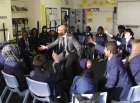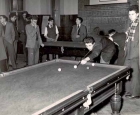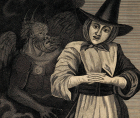Diversity in the past
The materials in this section are all focused on the choices that teachers have to make about the substantive content of their curriculum. The diversity that all students encounter within the past – the range of specific individuals and groups of people about whom they learn – and the ways in which different topics are treated within the curriculum are known to impact on the extent to which young people engage with school history and on the connections that they see between past and present. The resources in this section illustrate different ways in which teachers have increased the diversity of their curriculum – paying more attention, for example, to women other than monarchs in the early modern period; examining the work of Black British civil rights campaigners; or questioning the stereotype of the English ‘Tommy’ in examining who fought for Britain on the Western Front. Teachers will need to develop their own subject knowledge if they are to teach more diverse pasts and many of these resources help to provide some of that new knowledge or show where it can be found.
-

How diverse is your history curriculum?
ArticleClick to view -

'Britain was our home': Helping Years 9, 10, and 11 to understand the black experience of the Second World War
ArticleClick to view -

'Doing justice to history': the learning of African history in a North London secondary school
ArticleClick to view -

'Don't worry, Mr. Trimble. We can handle it' Balancing the rationale and the emotional in teaching of contentious topics
ArticleClick to view -

'How our area used to be back then': An oral history project in an east London school
ArticleClick to view -

'Victims of history': Challenging students’ perceptions of women in history
ArticleClick to view -

A comparative revolution?
ArticleClick to view -

Beyond the bolt-on: placing local history at the heart of a diverse and decolonial curriculum
ArticleClick to view -

Beyond tokenism: diverse history post-14
ArticleClick to view -

Bringing psychology into history: why do some stories disappear?
ArticleClick to view -

Bringing school into the classroom
ArticleClick to view -

CARGO Classroom: digital resources for diverse histories
17th March 2021Click to view -

Circle Time in the secondary history classroom
ArticleClick to view -

Cunning Plan 143: enquiries about the British empire
ArticleClick to view -

Cunning Plan 167: teaching the industrial revolution
ArticleClick to view -

Cunning Plan 173: using Black Tudors as a window into Tudor England
ArticleClick to view -

Cunning Plan 183: Teaching a broader Britain, 1625–1714
ArticleClick to view -

Cunning Plan 185… for building difference into GCSE curriculum design
ArticleClick to view -

Cunning Plan 186: teaching Samurai Japan in Key Stage 3
ArticleClick to view -

Cunning Plan 191: diving deep into ‘history from below’ with Year 8
ArticleClick to view

